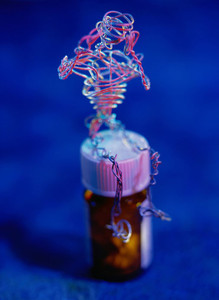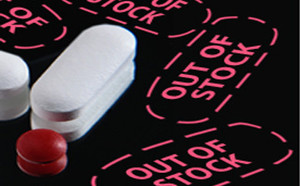Godman and co-authors review the changes in the utilization of venlafaxine post generics. This includes the limited influence on utilization post generics with no specific demand-side measures. This changed following prescribing restrictions for duloxetine. However, influence limited by the need to tailor treatments for patients with depression [1].
Health authorities are looking to increase the utilization of low cost generics to save considerable resources given ongoing cost pressures [2, 3] and without compromising care. This includes Sweden where high volume generics are priced at 4% to 13% of pre-patent loss prices. Multiple demand-side measures among the Counties (Regions) in Sweden have enhanced their prescribing versus patented products in a class. This includes the PPIs, statins and renin-angiotensin inhibitor drugs. The various measures resulted in reimbursed expenditure for the PPIs decreasing by 49% between 2001 and 2007 despite utilization increasing by 53%, reimbursed expenditure for the statins decreasing by 39% during the same period despite a 3.2 fold increase in utilization and expenditure on angiotensin receptor blockers (ARBs) decreasing by 26% between January 2007 and August 2011 despite a 16% increase in utilization.
However, there are certain drug classes where treatments need to be tailored to improve outcomes. This includes the newer antidepressants such as venlafaxine, mirtazepine, reboxetine and duloxetine as well as atypical antipsychotic drugs for schizophrenia and bipolar disorders. These conditions are seen as more complex to treat than acid-related stomach disorders, hypertension or hypercholesterolemia and there is considerable heterogeneity among the various products. There is also considerable inter-patient variation in their response rates. In view of this, patients should not have their treatments switched if they are responding to a particular drug. Consequently, it is difficult to instigate multiple demand-side measures to stimulate the prescribing of generics on the scale seen with the PPIs, statins or renin-angiotensin inhibitor drugs.
This was the case initially in Sweden following the introduction of generic venlafaxine. There was initially no change in venlafaxine’s utilization pattern versus other newer antidepressants following generic availability with no appreciable demand-side measures among the Counties. This changed with the introduction of the prescribing restrictions for duloxetine in view of concerns with its value versus generic venlafaxine and mirtazapine, especially with studies showing greater effectiveness with these two drugs versus duloxetine. Under this reform, duloxetine was restricted to patients suffering from depression or general anxiety disorders who had been prescribed at least two other antidepressants and had not reached their treatment goals. This measure significantly increased the prescribing of venlafaxine in Sweden, with stable utilization of duloxetine. However, the changes in utilization patterns for duloxetine and venlafaxine were not as great as those seen for the statins in Austria or Finland or the ARBs in Croatia and the Republic of Srpska with their aggressive follow-up of prescribing restrictions. Generic venlafaxine once available was typically dispensed, reaching 99.6% of total venlafaxine by August 2011. Expenditure/defined daily dose for generic venlafaxine was 91% below pre-patent loss prices in August 2011 in line with other generics, resulting in decreased expenditure for the newer antidepressants. Overall, three monthly expenditure on the newer antidepressants in August 2011 was 55% below expenditure prior to the availability of generic venlafaxine in January 2009.
The findings from the various studies in Sweden suggest multiple demand-side measures are needed to change physician prescribing habits. Consequently, authorities cannot rely on a ‘spill over’ effect from other classes to change physician prescribing habits. However, it is difficult for authorities to instigate multiple demand-side measures for antidepressants exacerbated by the need to tailor treatments. In view of this, the significant impact of the prescribing restrictions on the subsequent utilization of venlafaxine represents a good result. Consequently, providing guidance to other European countries. The high utilization of generic venlafaxine in Sweden suggests no issues with this generic in practice.
Abstracted by Dr Brian Godman, Member of International Editorial Advisory Board, GaBI Journal.
Editor’s comment
If you are interested in contributing a research paper in a similar area to GaBI Journal, please send us your submission here.
Related articles
Enhancing prescribing efficiency in the Republic of Srpska
Use of venlafaxine in Austria after introduction of generics
References
1. Godman B, Persson M, Miranda J, Skiöld P, Wettermark B, Barbui C, et al. Changes in the utilization of venlafaxine after the introduction of generics in Sweden. Appl Health Econ Health Policy. 2013;11(4):383-93.
2. Godman B, Wettermark B, Bishop I, Burkhardt T, Fürst J, et al. European payer initiatives to reduce prescribing costs through use of generics. Generics and Biosimilars Initiative Journal (GaBI Journal).2012;1(1):22-7. doi:10.5639/gabij.2012.0101.007
3. Godman B, Abuelkhair M, Vitry A, Abdu S, et al. Payers endorse generics to enhance prescribing efficiency; impact and future implications, a case history approach. Generics and Biosimilars Initiative Journal (GaBI Journal). 2012;1(2):69-83. doi:10.5639/gabij.2012.0102.017
Permission granted to reproduce for personal and non-commercial use only. All other reproduction, copy or reprinting of all or part of any ‘Content’ found on this website is strictly prohibited without the prior consent of the publisher. Contact the publisher to obtain permission before redistributing.
Copyright – Unless otherwise stated all contents of this website are © 2013 Pro Pharma Communications International. All Rights Reserved.








 0
0











Post your comment